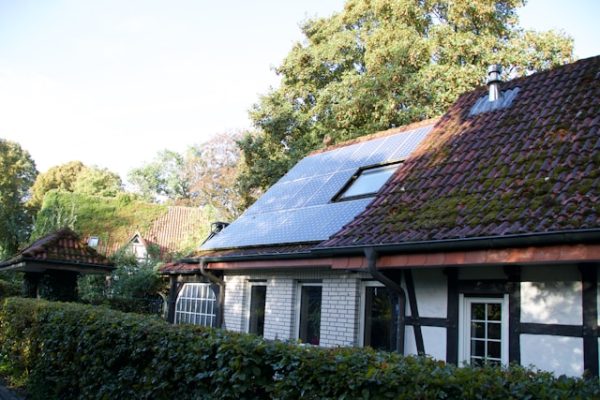Your home is always contributing to the environment. From its usage of electricity and gas, to how much waste it’s producing on a weekly basis, to the local landfill.
Every effort you can make to reduce this impact ultimately helps future generations live in a world that’s still habitable for them.
With that being said, here are five tips for creating a sustainable and eco-efficient home.

-
Reduce food waste
Food waste is something that you want to look at reducing wherever possible. Think about how much you’re consuming every week and how much of that is being wasted by being thrown in the trash.
Some food doesn’t even make it from your fridge onto your table. Instead, it often goes straight in the trash, and that’s contributing more to the household waste.
Try to compost what you can in order to minimize food waste in the trash. Try to eat and use up everything that you consume, as well as recycling any and everything that can be recycled.
-
Make use of eco-friendly lights and switch them off when not in use
Eco-friendly lights are something you’ll want to spend your money on, especially when it comes to keeping your energy costs low as a household.
With eco-friendly lights, you can still enjoy the same lighting amount used in your home, but at a much lower rate both on your bank balance and on the environment. However, if you want to go a step further, make sure to switch off all lights whenever you leave a room that’s no longer in use.
-
Install a water heater
A water heater that’s energy-efficient can help minimize the consumption of costs through a variety of methods.
These include reducing standby heat loss, utilizing renewable energy sources, and using less energy to heat the water required. Key features are often those that are tankless or make use of newer technologies like solar power or heat pumps.
A water heater installation is easy to do with the right plumber, and it’s worth checking the state of your water heater to see if any upgrades or fixes can be made.
-
Reuse what you have and sell or donate what you don’t want
When you’re looking to create a more sustainable home, it’s always good to be conscious of what you’re buying on a daily, weekly, or monthly basis. Reusing what you have is a good way to keep making use of things that have had a carbon emission impact.
You can choose to sell or donate anything that you don’t want and that’s still in a usable state, rather than just throwing it in the trash.
-
Be sustainable by shopping less and growing produce
Sustainability is all about making use of what you already have, using less, and in some cases, producing your own power and food!
If you have a garden readily available, you could always look to grow your own produce. From tomatoes and salad bits to fruit and herbs, there’s a lot that you could produce yourself in order to make yourself more self-sufficient.
These tips will help you create a more sustainable and eco-efficient home environment for your family to live in this year and every year.

Leave a Reply